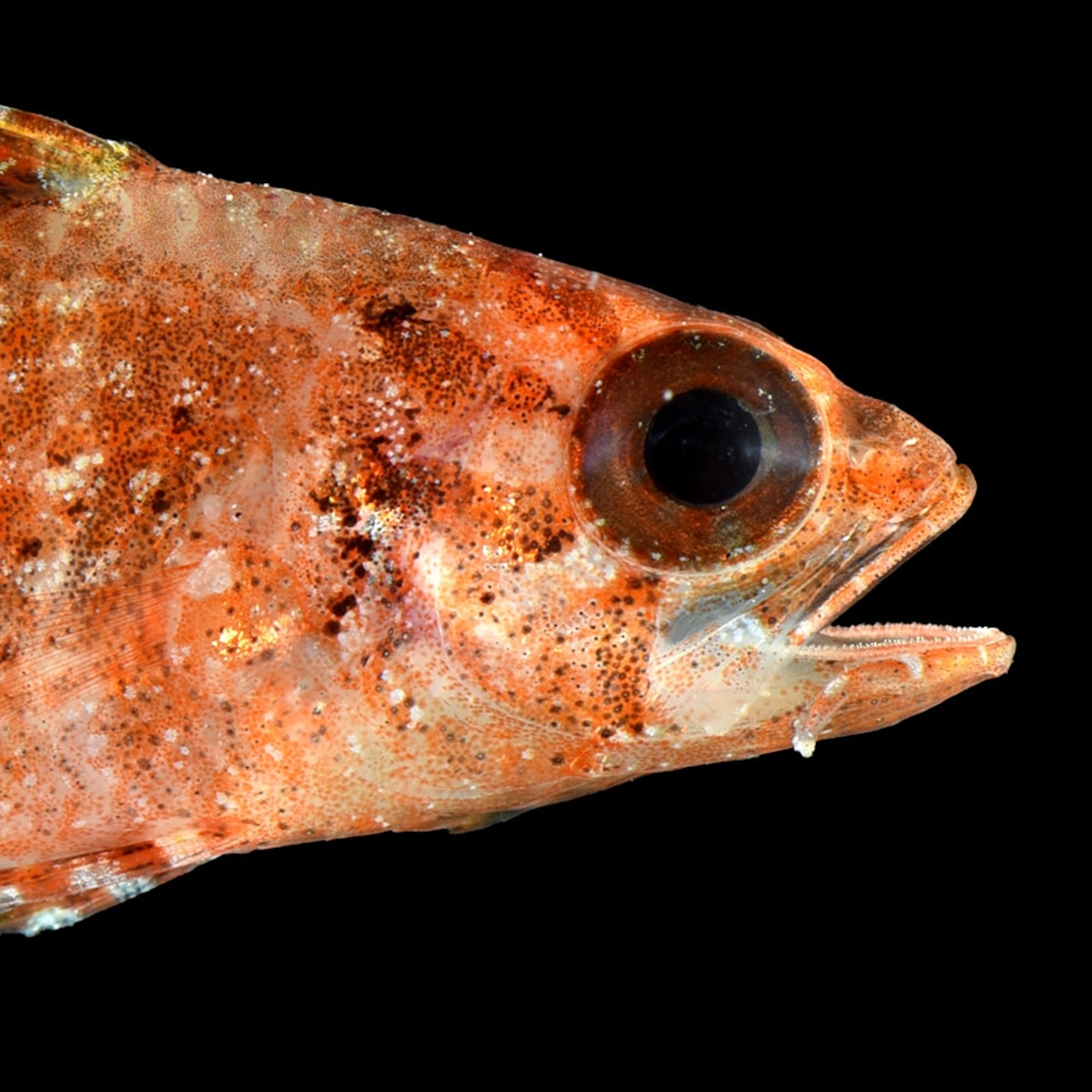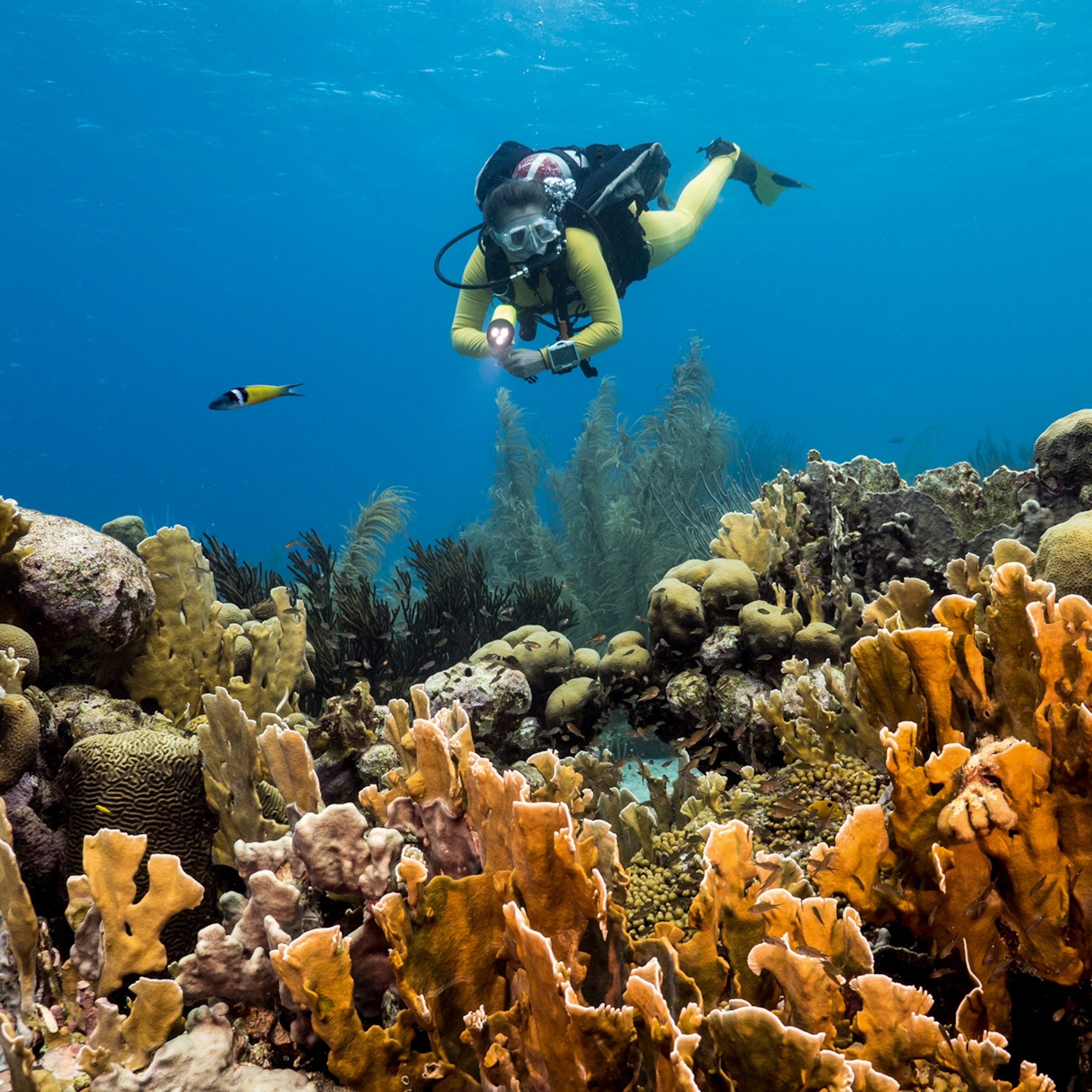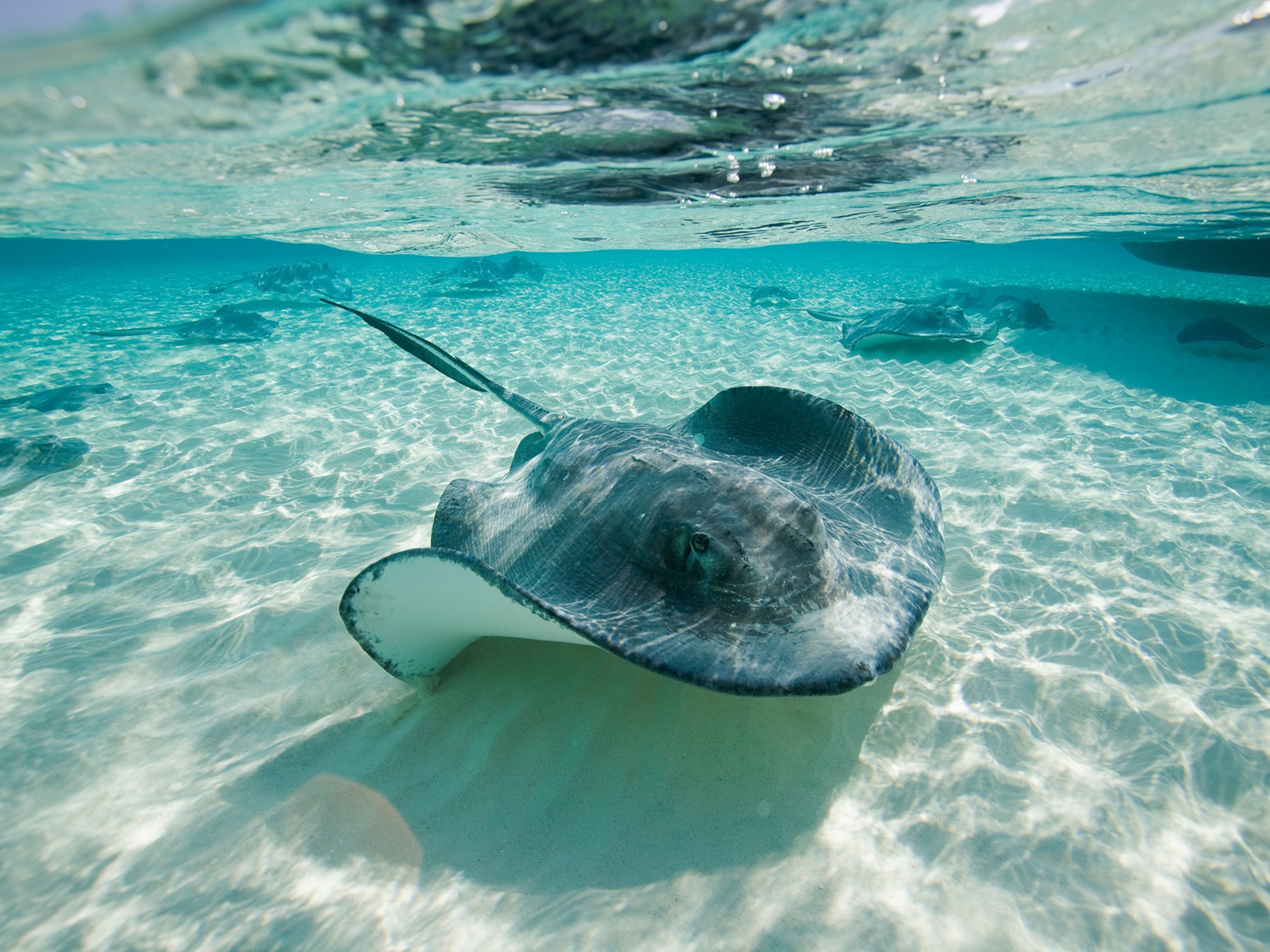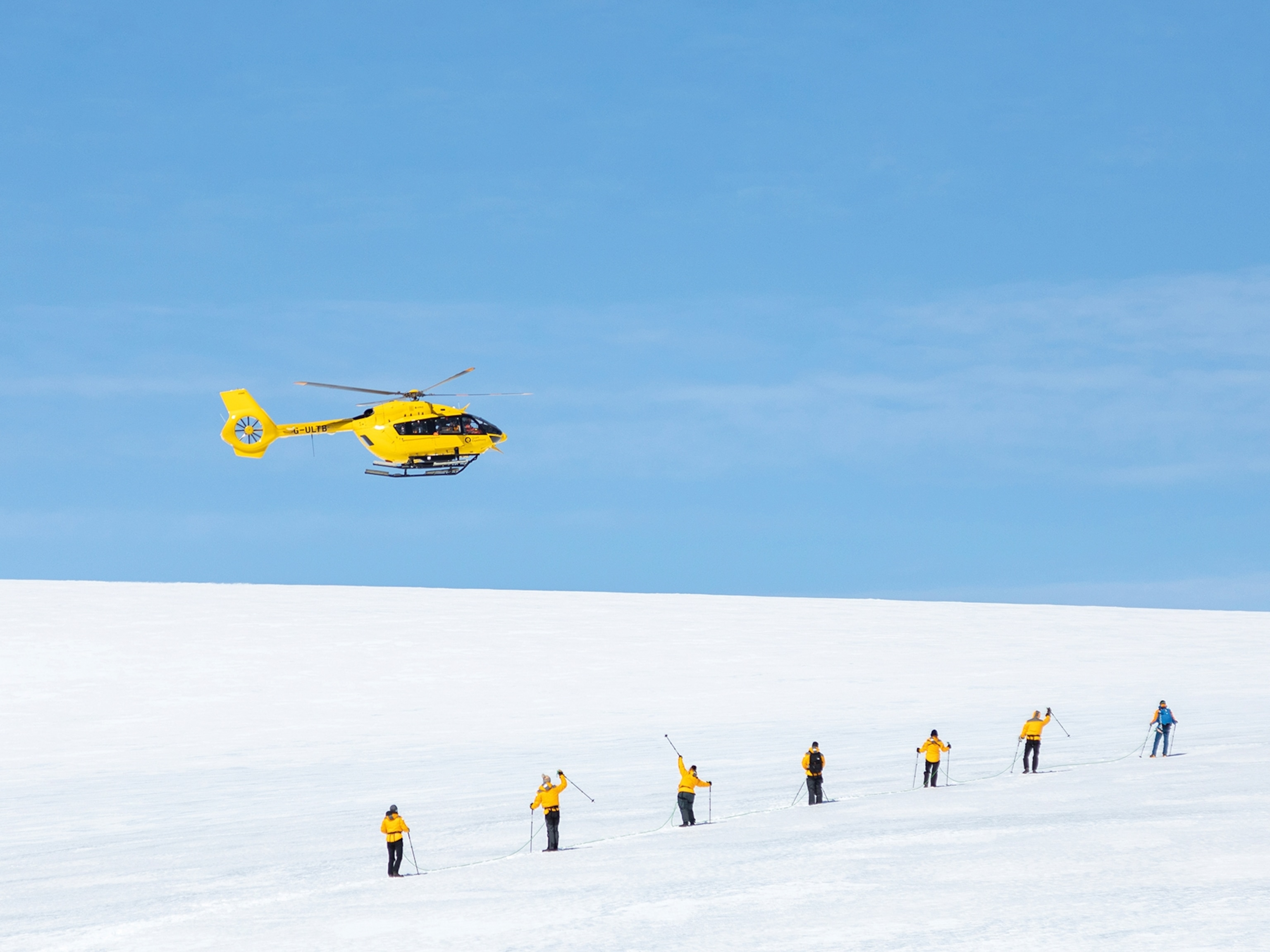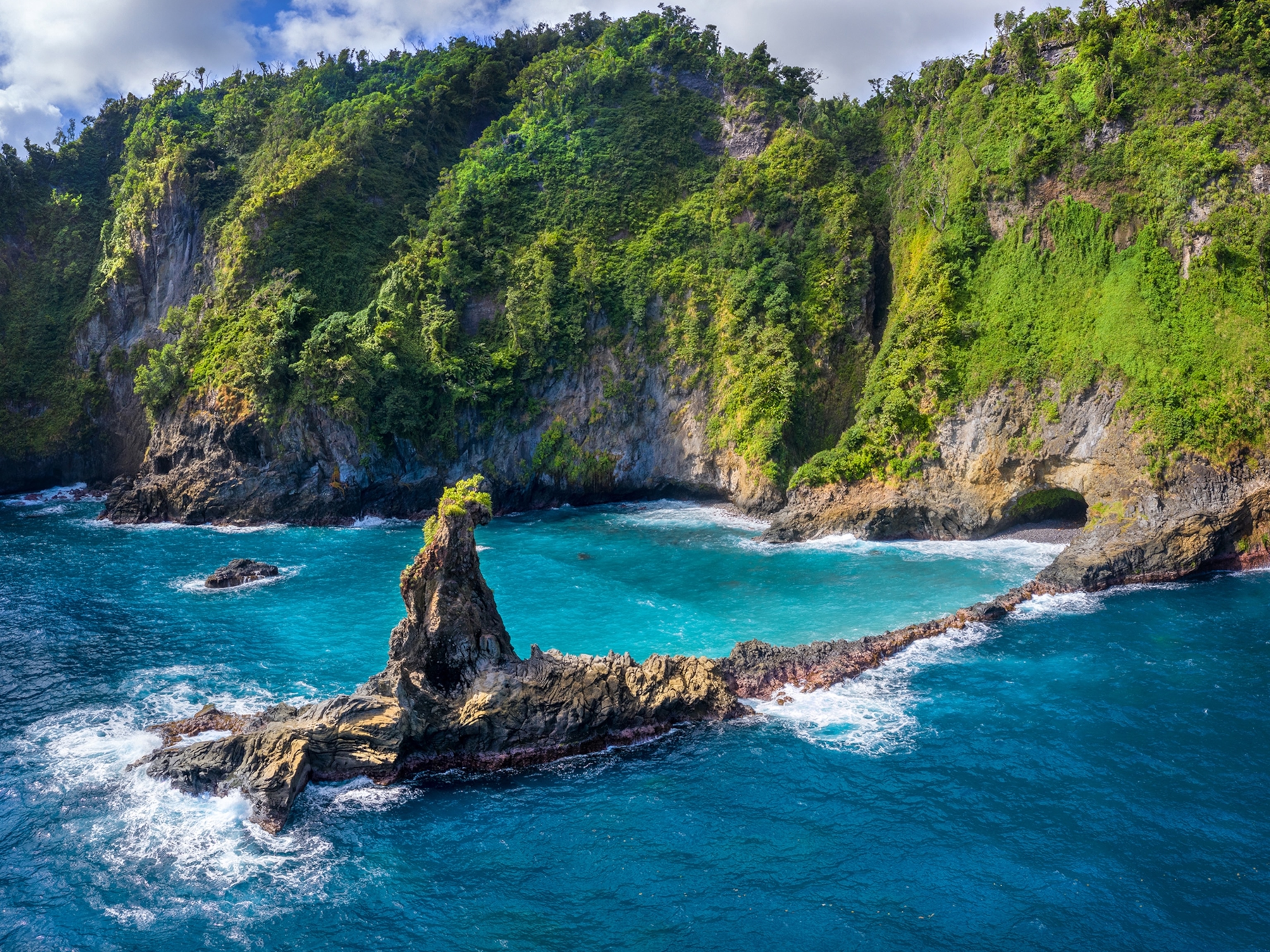
Surprising, Vibrant Reef Discovered in the Muddy Amazon
Colorful sea fans, fish, and gigantic sponges found in murky waters. One scientist says the reef has the most amazing animals she’s ever seen on an expedition.
After sampling muddy water from the mouth of the Amazon River, oceanographer Patricia Yager steamed in the research ship Atlantis toward the continental shelf, where a Brazilian colleague was chasing a phantom. Yager’s colleague was carrying a 1977 six-page research paper that included a hand-drawn map suggesting this region might mask an extraordinary set of reefs.
Yager was skeptical. The mouth of the Amazon was thick with more runoff and sediment than any river in the world. She had heard diving in this area was like swimming through goopy, dark stew. "I thought that everything would have just been smothered by settling mud from the river's plume," she says.
But when her colleague, Rodrigo Moura of the Federal University of Rio de Janeiro, dredged small areas near the shelf that day in 2012, he uncovered one of the most surprising finds in modern sea research–an extensive deepwater reef system up to 120 kilometers offshore, below the Amazon's thick, dirty plume.
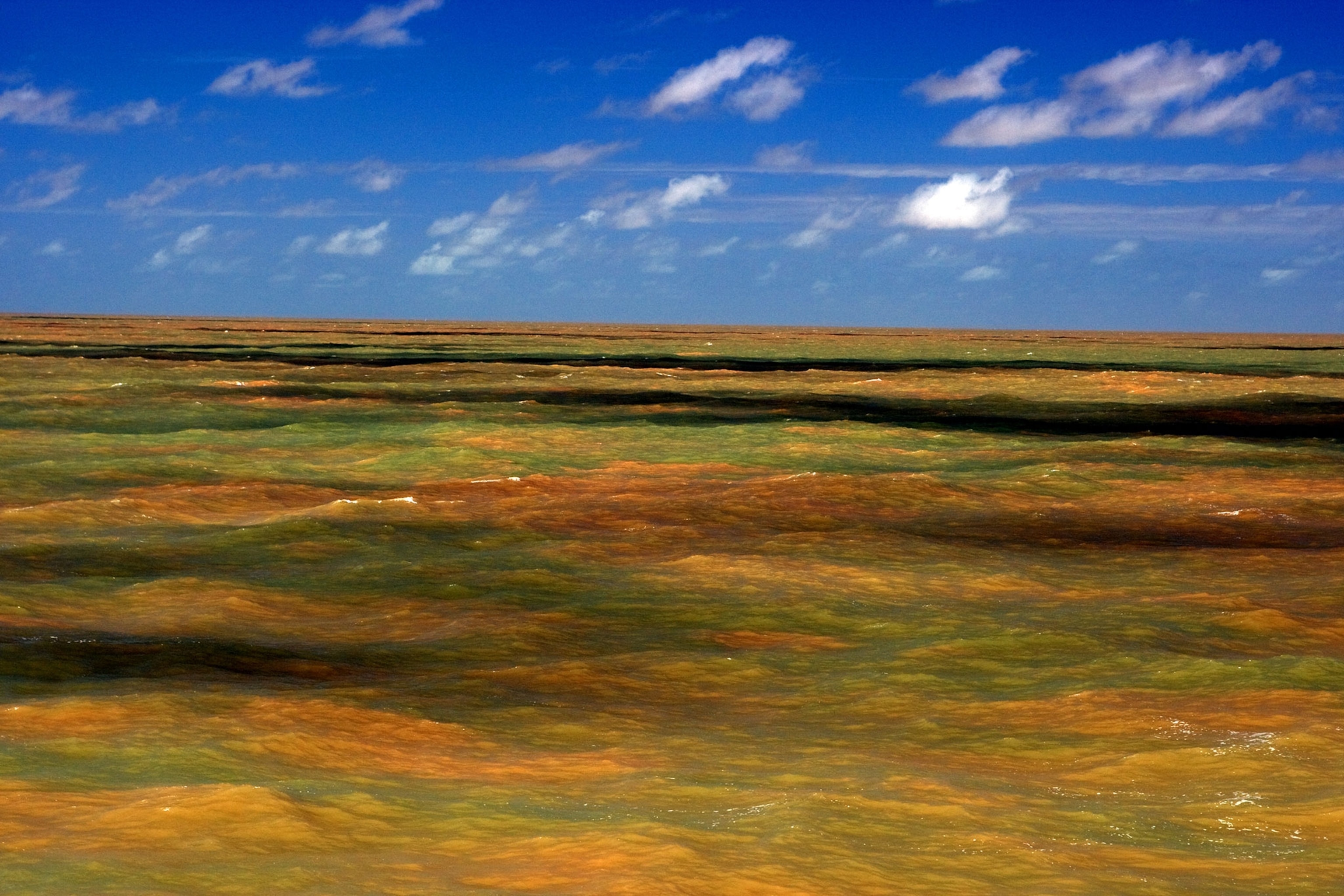
"We brought up the most amazing animals I've ever seen on an expedition like this," says Yager, at University of Georgia, who studies microbial communities where the Amazon spills into the Atlantic Ocean. There were sea fans, and yellow tubes, and tiny, sunset-colored fish, as well as pink coral-like crusted algae called rhodoliths, and gorgeous sponges in yellow and red. "All the scientists just hung over the rails amazed at what we were finding."
The discovery, detailed Friday in a study published in the journal Science, caught many by surprise, including the researchers who were hunting for it, and has scientists reconsidering their basic knowledge about reefs. Unlike typical tropical corals, much of this system exists in areas with no light, no photosynthesis, and extremely small amounts of oxygen. Yet some sections stand 30 meters high and extend 300 meters in length.
"We found a reef where the textbooks said there shouldn't be one," says study co-author Fabiano Thompson of the Federal University of Rio de Janeiro.
Over several years, the South American researchers eventually would unearth tiny brittle stars and basket stars, segmented marine worms, and 73 species of fish–most of them carnivores–in waters between the Brazilian border with French Guiana and Maranhao State. They hauled up 61 types of sponges, including one giant as heavy as a baby elephant.
The reef supports large lobster and red snapper fisheries, but is not highly diverse. The thick sponge beds are most similar to areas of the northeast Atlantic Ocean off Canada, and some tropical waters in Western Australia. But those reefs aren't near an estuary that receives up to 300,000 cubic meters of freshwater a second, supplying 20 percent of the world's river discharge.

Scientists still have not been down to see the reef itself. The water is murky, currents are swift and rough seas can be deadly, and the reef is between 50 and 100 meters deep. "People are curious about that–seeing is believing," Thompson says. They've done quite a bit of work but during only a few research trips, mapping from the surface a reef system that appears to cover 9,500 square kilometers.
Most people tend to think of reefs as colorful tropical corals, which grow in shallow water in warm regions and can extend for thousands of kilometers. But even the deep regions of Alaska are home to extensive coral gardens.
Yet because massive rivers can flush nutrients into marine waters and abruptly change salinity, chemistry, and light penetration, this flow usually blocks the formation of major reefs. As Yager presumed, sediment typically coats and recoats the seafloor, and, in this region in particular, high winds and swift currents appeared likely to limit the diversity of bottom-dwelling invertebrates.
We found a reef where the textbooks said there shouldn't be one.Fabiano Thompson, Federal University of Rio de Janeiro
In 1977, scientists caught dozens of colorful fish normally associated with reefs near the mouth of the Amazon, leading them to speculate that this region might be different. Then, in 1999, Moura found yellow stony corals, radiating disk corals and other species that ultimately suggest coral reef genes from the Caribbean side of the Atlantic were being transported across the Amazon plume, raising the possibility that a more substantive reef connected the two regions.
It turns out that water near the shelf is deep enough and currents strong enough that sediments don't always filter to the bottom. In the south and central portions of the reef, seasonal changes in runoff and currents allow light to penetrate at some portions of the year. In the northern section, the reef is alive, but hasn't been growing for thousands of years, and remains far less diverse. But it still offers hope for the future.
While scientists worry that climate change is so damaging reefs around the world that their structure will cease to be of value to fish, the northern section of the Amazon reef is still a significant fish nursery.

Yet, already, a threat to this new reef is emerging. At least 35 sections of the continental shelf were acquired by Brazilian or transnational companies for oil exploration, up to 20 of which may soon be producing oil near the reefs.
"Such large-scale industrial activities present a major environmental challenge, and companies should catalyze a more complete social-ecological assessment of the system before impacts become extensive and conflicts among the stakeholders escalate," the new study recommends.
We brought up the most amazing animals I've ever seen on an expedition like this.Patricia Yager, University of Georgia
As Thompson points out, scientists have really only begun to understand what they've found.
"We've only surveyed 900 kilometers," Thompson says. They haven't seen anything from the other 90 percent. "We need to go back there 20 more times."
Follow Craig Welch on Twitter.
